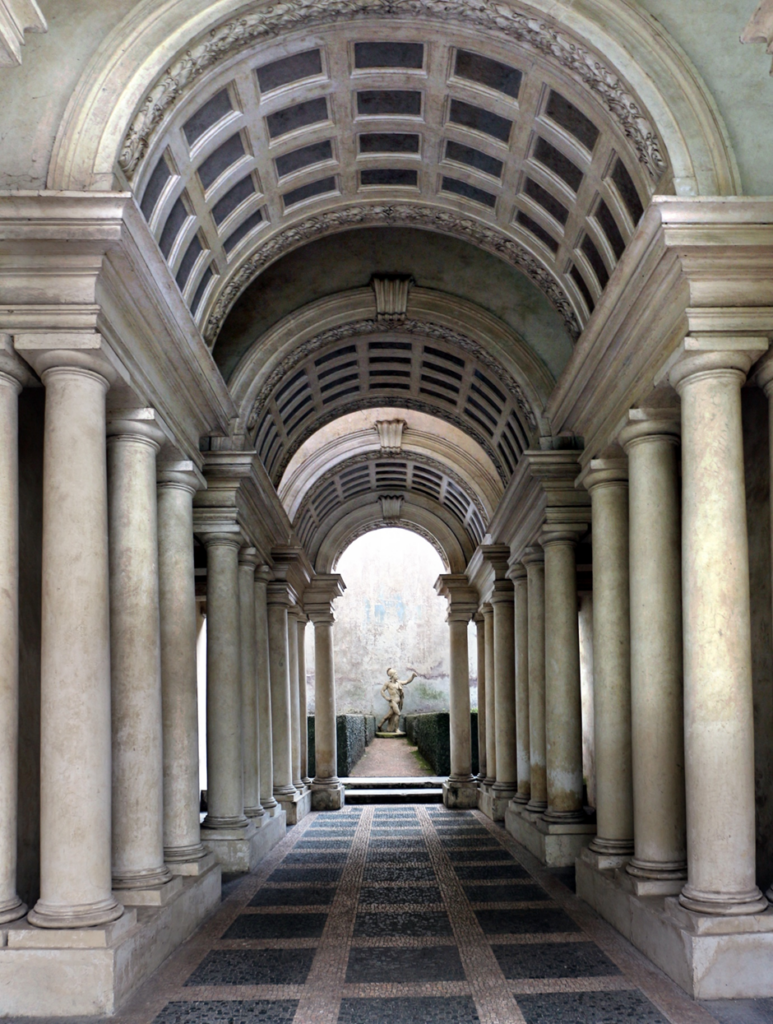
Q1. Describe what you see in this image.
A1. This corridor, called Borromini’s Corridor, is framed by 12 classical columns left and right, a mosaic gridded floor and an arched coffered ceiling broken into three distinct sections. Beyond it there is a garden with symmetrical geometric green hedging and a statue of a semi-naked man on a simple plinth wearing a helmet and cloak. His hands appear to have held something (possibly a spear, no longer visible?).The wall at the back has splashes of faded colour as if it had once been painted.
Q2. How long is the corridor in your estimation?
A2. The corridor appears to be approximately 50 metres (164 feet) long. However, this is an illusion as it is only 8 metres (26 feet) in length. In addition, the statue (of the Roman God of War, Mars) appears to be life size, but is only 60 centimetres (23 inches). This optical illusion is due to a number of architectural features designed to trick the human eye. These are based on the fact that the columns get shorter in height, the floor rises, and the ceiling lowers towards the back of the corridor. The parallel /orthogonal lines of the columns, the floor and the hedges appear to converge on a single vanishing point at the statue. This creates a strong sense of perspectival depth that is far greater than the reality. If a person entered the corridor, the scale of their body would appear to increase to gigantic proportions as they walked down the corridor so that their head would reach above the column at the end. Borromini, one of the most imaginative Baroque architects, was commissioned by Cardinal Spada to make this folly to give the illusion of a larger space and garden than the city centre location allowed.


